Raise your hand if you have ever thought to yourself “why does this black coffee taste much stronger than the one I had from that shop next to my house?”. Of course, truth be told, not all coffee tastes the same. If you are a true coffee drinker and are blessed with a refined palate, you will certainly be able to discern the subtle different tastes. Some coffee has got a much more earthy tone to it while some others taste much sweeter and less bitter and strong.

There are also some types of coffee out there that have a distinct fruity flavor and floral aroma that really give their own unique coffee content. So, at this point, you might wonder why there is a difference between the flavors of different coffee. After all, they are all coffee, why can’t they be the same? Well, there is no one short answer to this. In fact, there are a number of various contributing factors which really set one coffee apart from another. Here they are:
Contents
Coffee Variety
One of the most important factors that really brings out the distinctiveness of every coffee flavor is the variety of the coffee itself. So even before the coffee is grown and planted in the soil, the inherent variety of the coffee seeds can make a huge difference in how the coffee taste is going to turn out.
Needless to say, various coffee has vastly different flavors. Some varieties have a much stronger tone, whereas those of other types of coffee do not have such qualities. Some examples can be the Arabica plant vs the Robusta species. The former plant produces finer coffee beans than the latter, which ultimately results in a huge distinction between the two.
Terroir
What is terroir? And, how does it affect the taste of your favorite cup of coffee? So, let us learn a little more about the background behind this word. In fact, terroir is a word that comes from a French language which essentially refers to soil or dirt. Anything that you think about soil is called terroir. Apart from this, as interesting as it sounds, this word is predominantly used in the wine industry only. This is because the characteristics of the land, where the coffee is grown, play an essential role in influencing the final product quality. When it comes to terroir, there is not just a single aspect but there are actually a few key points that you need to know about. They include soil, climate, and elevation.
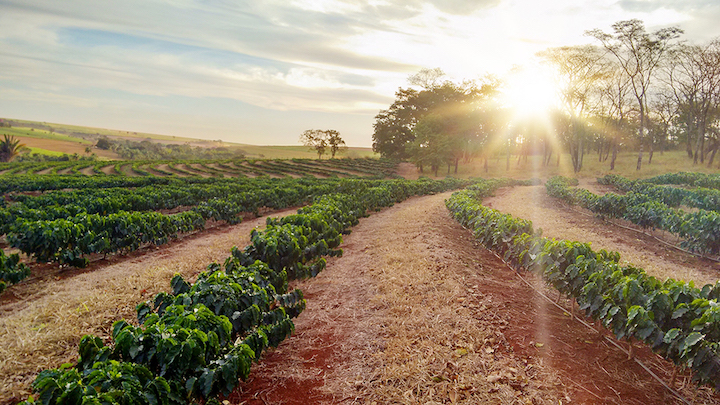
So, first things first, soil. What is there to know about the importance of soil in producing the unique cup of coffee that you drink? With terroir means soil, there is no doubt that soil is the first on the list to talk about. The constituent components that make up the soil are the key actors at play. Things such as the minerals, which are presented in the soil, can immensely affect the body as well as the coffee bean acidity. Moreover, experts claim that volcanic soil is the best type of soil for growing coffee. That is because the volcanic soil is packed with vital nutrients such as calcium, potassium, magnesium, and phosphorus that can fertilize the soil. Additionally, another key information related to the soil is that the air can easily go through and has a larger number of organic materials that can provide better water retention in rainy seasons, preserving water for the drier seasons. This will then influence how the plants can have access to nutrients and minerals that are in the soil.
The second factor that can play a role in impacting the quality of the terroir that will ultimately make a difference in the final test of the coffee is climate. In general, coffee is normally produced within a particular area around the world, and that special area is commonly known as the “bean belt’’. This area extends all across the world, primarily sitting on the equator, stretching as far north as Myanmar and Mexico and as far south as Tanzania and Brazil. The interesting thing about the bean belt is that the climate is not uniformly the same within this area of ‘bean belt’, but rather varies from place to place within this area. The climate for growing the coffee is usually categorized as macro and micro. If you talk to coffee experts, you will most likely hear them mentioning coffee’s ‘micro-climate’. Micro-climate refers to that of one small area being hugely different from that of the whole bean belt region. For optimal growth of coffee plants, it is imperative that there are both rainy and dry seasons in the area. The rainy season is important in facilitating the growth of plants, fruits, and trees. The dry season, however, is essential during the period of the harvesting period. Moreover, the dryness also plays a vital role in the following harvest as it promotes the flowering of the coffee beans. Consequently, it results in a great necessity for new coffee cherries to flourish.
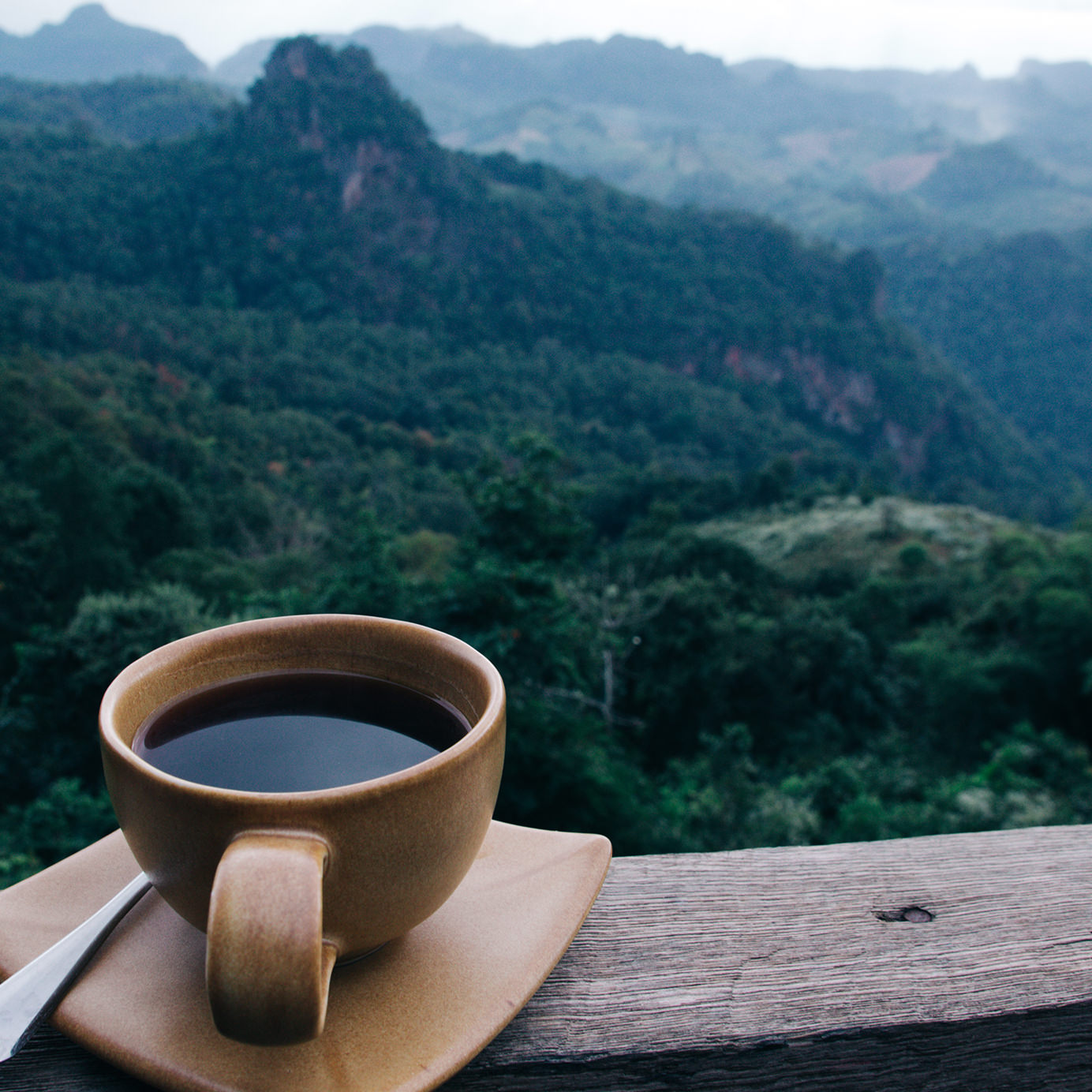
Last but certainly not least, an elevation or altitude is the final last factor related to terroir. As a rule of thumb, the higher the altitude, the sweeter and the better the quality of the coffee. On the other hand, really, it is all about the weather conditions; colder weather creates more acidity in the final taste of the coffee. Therefore, because the elevation is all about the weather, it is important to take into consideration such things as the distance from the equator, or the wind intensity.
Farming Practices
The practice through which the coffee is farmed can also determine the flavor of your cup of coffee. The term farming practice is quite a broad term that entails everything from the methods of planting the coffee beans to the use of chemicals and the picking process of the coffee cherries.
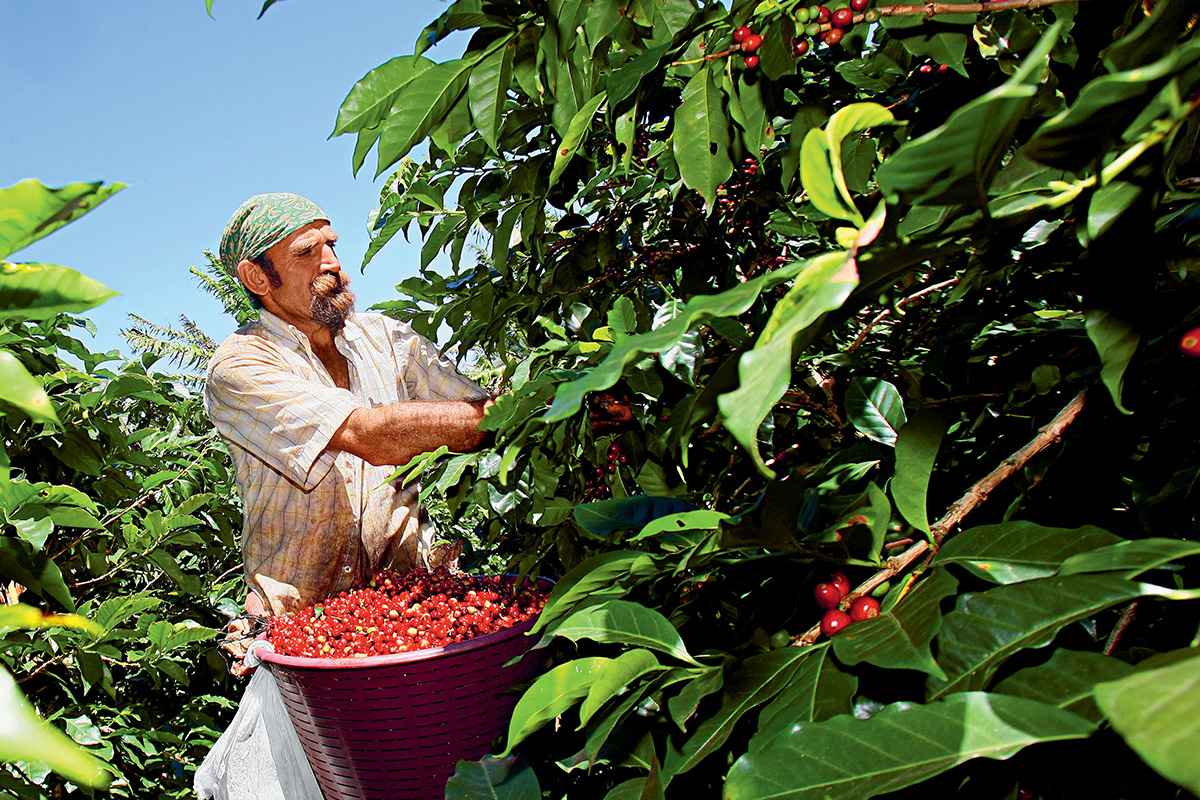
Let us dive deeper into the process of picking coffee beans to fully understand how farming practices can profoundly affect the coffee quality. You might have already known that in order to maximize the quality of the product, the plants should be harvested at the time of proper ripeness. If it is not ripe or mature enough to be reaped, then the pre-mature picking can ruin the final coffee’s flavor as a result.
Processing
In addition to all the previously mentioned factors, including the coffee variety, terroir-related variables, like climate and elevation, and the methods that are practice during the farming process of the coffee, there is another factor that has a lasting effect on the taste of the coffee. That factor is processing. In fact, most coffee professionals claim that the way the coffee is processed has a bigger impact on the final coffee’s taste than any other factor. So, what exactly is coffee processing?
Processing refers to the phase of coffee production in which the farmers or harvesters start transforming the coffee from its initial state as a seed of the plant to a green bean that is ready to be roasted. This involves separating the seed from the fruit, drying, and milling. There are a number of different types of processing, and this difference in terms of how the coffee is processed can create the unique flavour profiles that each coffee has. For more details of the coffee-making process, you can go to check “Process of How To Make Coffee | The Seed To Cup Incredible Journey“.
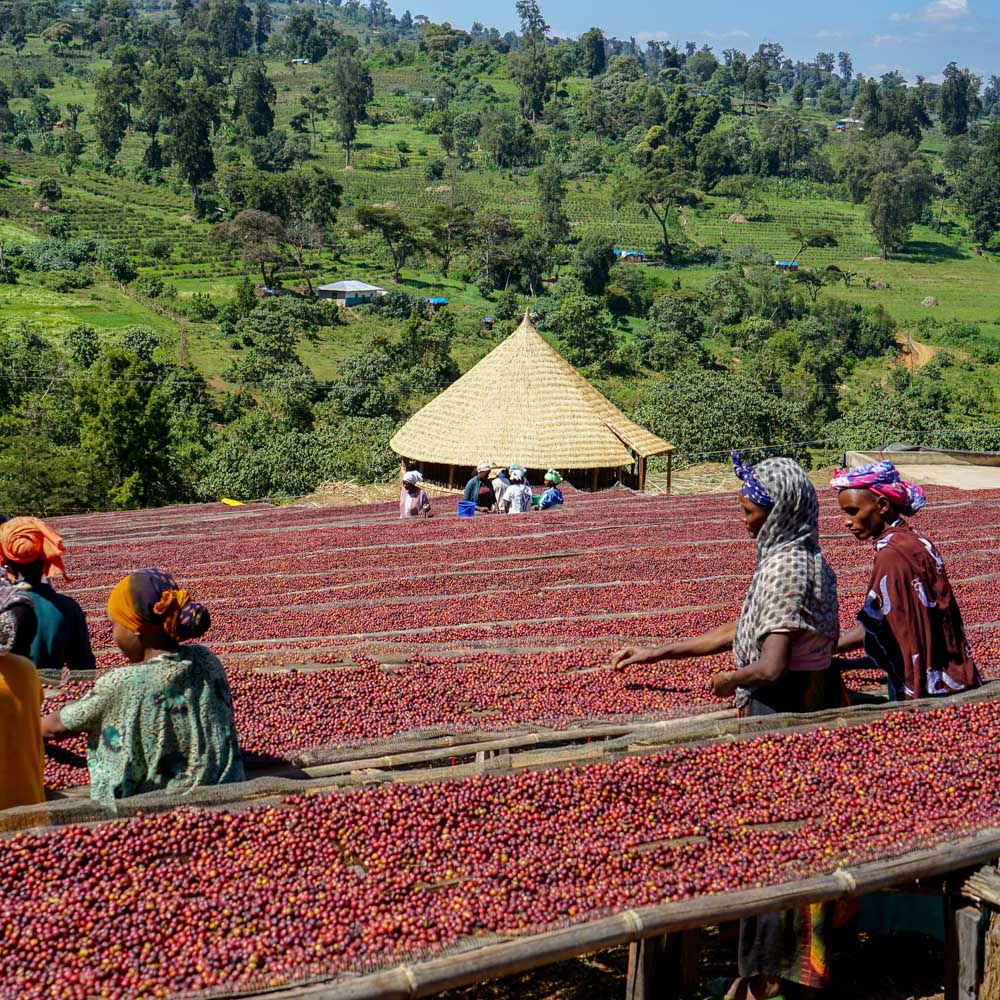
One of the oldest and most commonly practiced methods of processing coffee is called natural processing, also known as cherry-dried, dry process, or dry naturally. As its name suggests, this process requires little to zero amount of water and thus is usually used in regions where there is not much water available. How this process works is that after being harvested, the coffee cherries are immediately taken to be dried while the fruit inside is still intact. This process allows the organic material to have more time in contact with the coffee pulp and seed. If it is done properly, this natural processing will bring a unique fruity flavor to the coffee, almost smelling like blueberries or strawberries. However, the producers need to be extremely careful. If it is not done well, this type of processing will result in poor-quality and dirty-tasting coffee.
Another common processing that also affects the quality of coffee is known as washed or wet process and is generally explained in contrast to natural processing. While in natural processing, the cherry is being dried and processed when it remains intact, the washed processing is different. In the washed process, the bean is completely removed from the cherry in a procedure called de-pulping. After that, the beans are stored in the fermentation tanks also known as wet mills, and they have to stay in there for around a total of 36 to 72 hours. Because the bean is extracted from the fruit right from the start, there is no doubt that this has an impact on the final flavors of the coffee by making the flavors that are inherently in the seed become presented much more clearly and distinctly. This is why most people say that the washed processing makes the coffee taste “clear”.
Brewing
Among all the factors that have a say as to how the final outcome of the coffee flavor is going to turn out, the brewing method is probably the most talked about. We all know that the difference in how coffee is brewed can result in clear distinctions between each cup of coffee. It can be noted that brewing is probably the one and only factor that we, coffee lovers, are most in control of, so you better jot down all the important details of this point, or you would never have the perfect cup of coffee that you all want.
When it comes to brewing, you might wonder why this is so important. You may be thinking about mixing water and coffee grounds, so it does not seem to be a big deal. However, the brewing process actually has a lot of small often-overlooked variables. These together can make a huge difference in the coffee you are drinking. These include such things as temperature, the amount of coffee used, and the way water interacts with the coffee grounds. For example, there is this term called “extraction”, which refers to how much the coffee aroma and essence can be extracted from the coffee grounds. The variable affecting is the water temperature used while brewing. Hotter water is going to produce better flavor extraction because the hot temperature is more effective in breaking down the particles of the coffee grounds, whereas colder water temperature cannot produce as much flavor extraction. So, if you want to customize your coffee taste, it is important to take into account all the necessary steps of brewing your coffee, nailing them so that you can always enjoy coffee the way you like it.
The Size of The Coffee Grounds
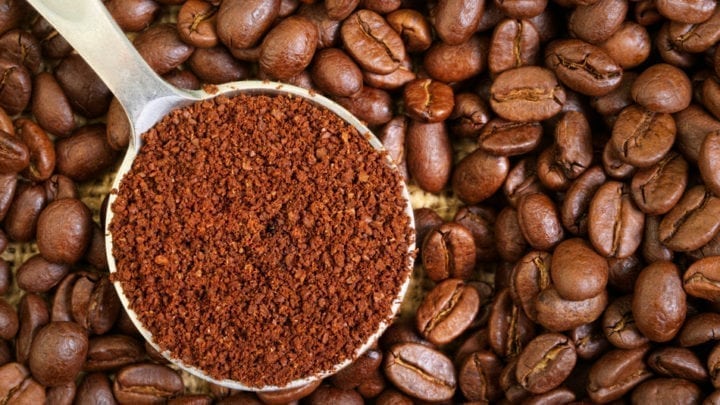
It is quite difficult to pinpoint the exact size of coffee grounds that you also should be going for. This is because it depends pretty much on the type of brewing equipment used. Some coffee-brewing machines require a much larger size of coffee beans. On the other hand, other brewing equipment does not need as large coffee grounds. Smaller grounds means that there is little way for the water to seep through the bean, while in the case of coarser grounds, the water will flow between the beans more easily.
It is very important for you to learn about your own brewing equipment that you have at home. If you use the incorrect grind size, the coffee flavor will become too bitter or diluted by water. Find out the correct coffee grinder size or simply the best coffee maker with grinders.
Roasting
Most people always hold the belief that the only impact that roasting has on the coffee beans is merely color. This is a myth that needs to be busted. In fact, roasting does more than just adjusting the colors of the beans.
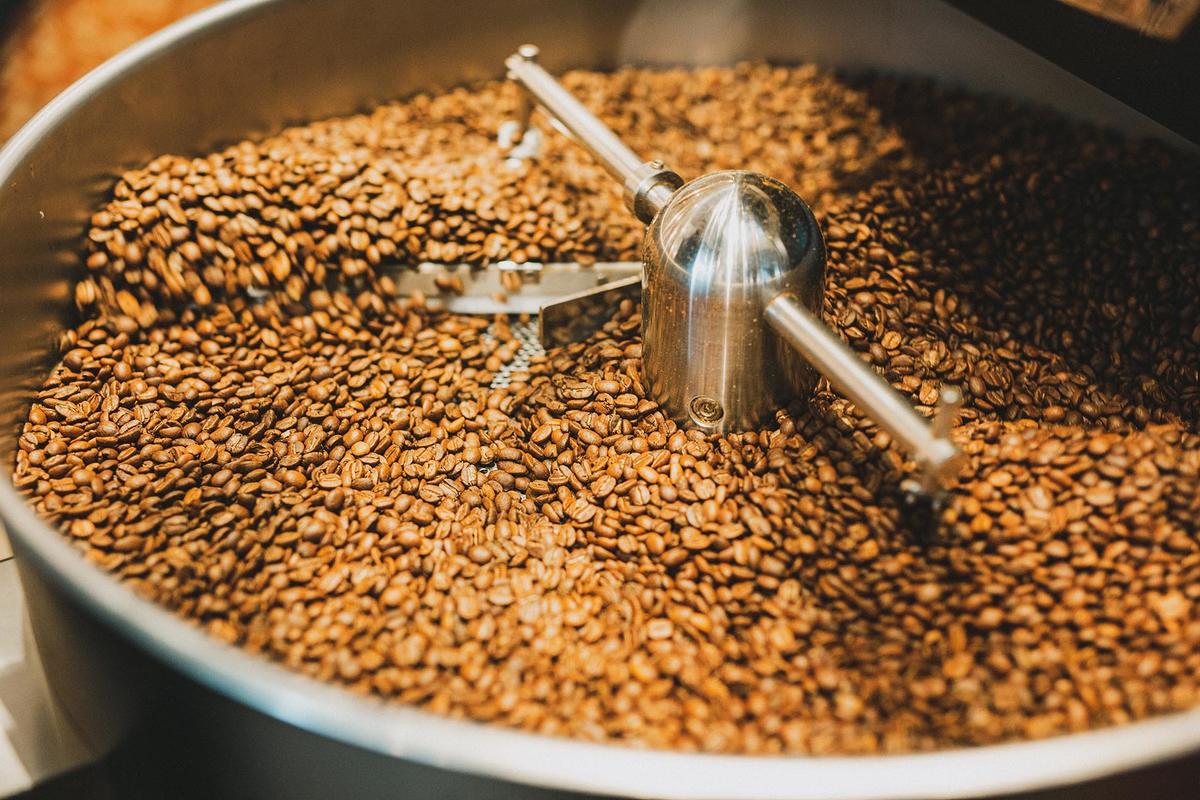
Dark, medium and light roasts are going to determine the kind of coffee contents that are in your coffee cup. The roasting of the coffee beans plays a vital role in producing the unique aroma and flavor of every coffee. While in the process of roasting the coffee, there are certain chemical reactions that take place within the bean, and these reactions are what make the difference. The longer the bean is roasted, the better flavor extraction is going to be. As a result, lightly roasted coffee always has a much lighter flavor because less flavor is being extracted. Meanwhile darker coffee roasting will produce stronger flavors with a hint of smokiness to it.
How Coffee Is Stored?
Coffee bean storage is extremely important in producing the nice flavor coffee. This factor is in fact associated with the freshness of coffee beans. It is essential that the beans are stored properly in order to maintain the freshness of the coffee beans for as long as possible. Needless to say, the fresher the beans are, the better the coffee will taste. So, the question is how can we store our coffee beans in a way that makes them stay as fresh as it can be?
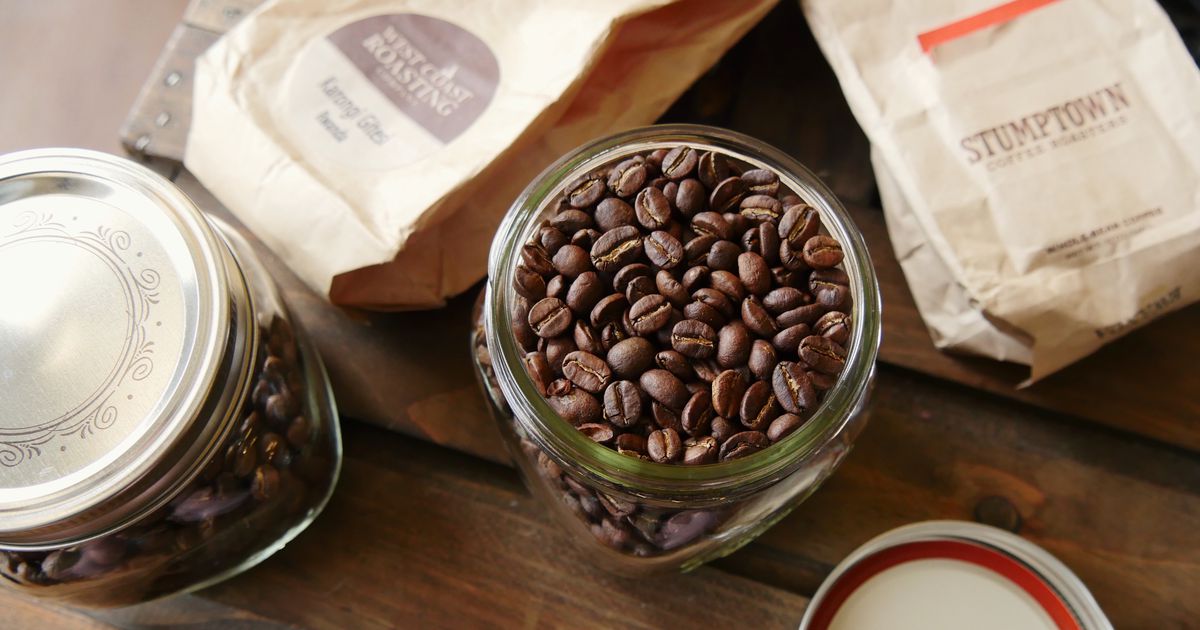
Well, there is good news and bad news. The bad news is that right after the coffee beans are roasted, they will lose their freshness almost instantly. It is even more difficult if we want to store them for long-term use. So, whenever you can, try to brew your coffee right after the beans have been roasted. Otherwise, you will not be able to taste the nice aroma of fresh coffee. The good news is that there are some possible ways we can use in order to not make the coffee go bad too quickly. The trick is to store the beans in a vacuum-sealed and airtight container. Once the beans are exposed to too much air while being stored, the freshness will be gone immediately. To get the most effective information on how to store the coffee bean properly, you can visit “How To Store Your Roasted Coffee Bean The Right Ways According To Experts?” for more detailed information.
References
- Why does different coffee taste different | Caffe Society | Damien Wilde
- Understanding coffee flavors: What factors affect coffee bean quality? | Intercontinental Coffee trading.
- How do coffees around the world differ in taste? | Bean Box
- What do coffees from around the world taste like & why? | Perfect Daily
- Why do coffees from different regions taste different? | Colleen Callahan
